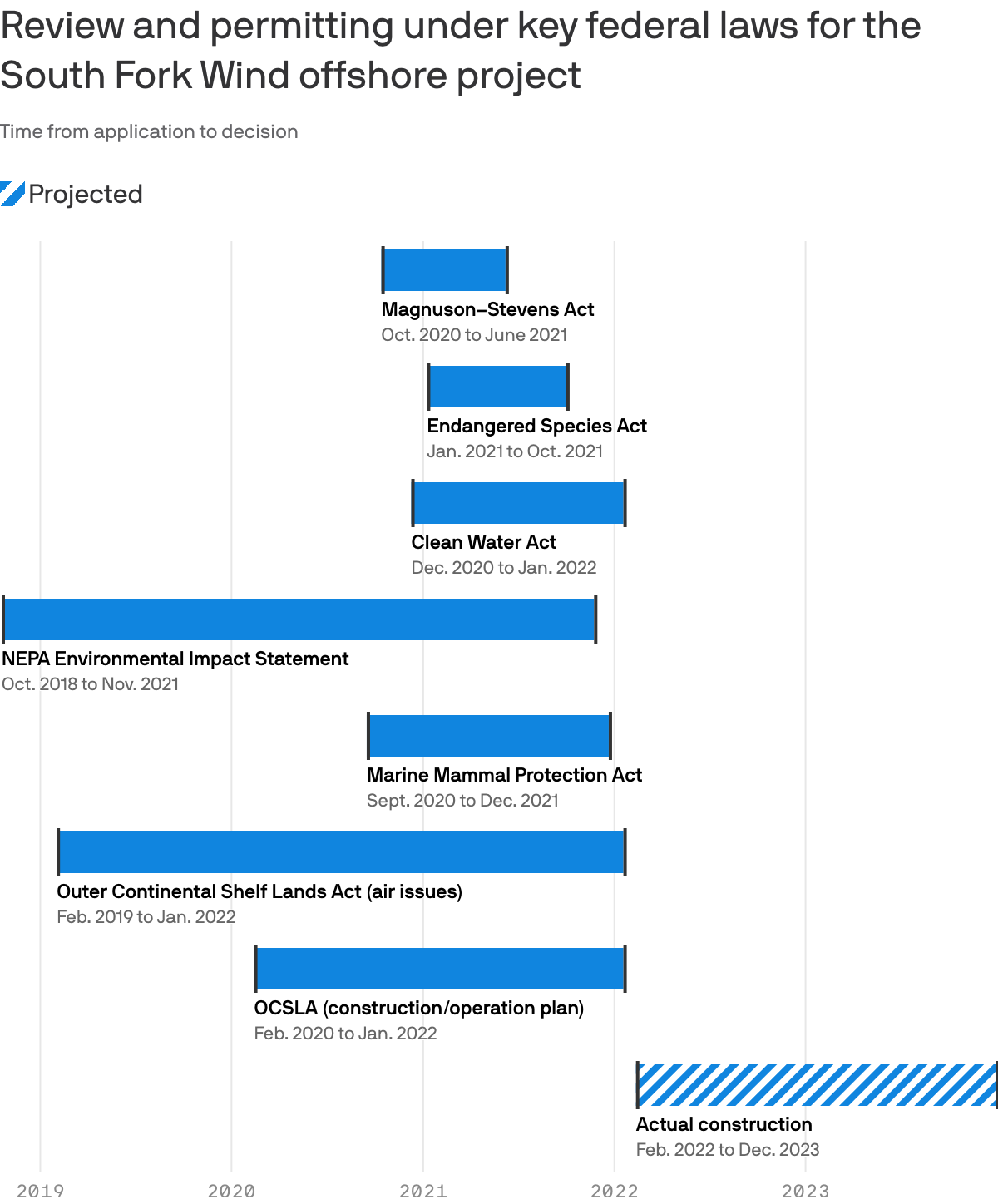Data: Brookings; Note: Does not include state and local permitting; Chart: Thomas Oide/Axios
This chart about South Fork Wind between Rhode Island and New Yorkis adapted from a new Brookings Institution primer on permitting for major energy projects, Ben writes.
- The timeline for this offshore wind farm is a real-world look at something hotly debated lately — how to
- speed review of energy infrastructure.
Why it matters: Sen. Joe Manchin (D-W.Va.) is struggling to gain traction for his proposal to cut timelines for fossil fuel pipelines, power transmission, renewables and more. This week, lacking votes, he abandoned efforts to include the plan on a short-term government funding bill. But lawmakers are still talking.
What they’re saying: The Brookings analysts credit the Biden administration with some efforts to speed permitting under its existing powers, but they add: “The need for an extremely aggressive build-out of renewable energy generation and electric transmission well above historical rates suggests that much more permitting reform for such infrastructure is necessary.”
How does permitting for clean energy infrastructure work?
By Rayan Sud and Sanjay Patnaik | Brookings
The Biden administration has set a target of reducing greenhouse gas emissions to half of 2005 levels by 2030 and to net zero by 2050. To meet these targets the United States will have to quickly build a vast amount of clean energy infrastructure, replacing fossil fuel powered electricity generation with renewable sources of electricity like wind and solar. In addition, direct consumption of fossil fuels such as gasoline-powered cars and gas-powered heating will have to be electrified and powered by the new clean electric grid. These factors combined mean that to achieve the Biden administration’s targets, the electric grid needs to be expanded by at least 60% by 2030, and electricity demand may nearly double by 2050.
Such a rapid expansion of the renewable electricity system would require the quick planning, permitting, and building of renewable energy sources like solar plants and wind farms. It also requires long-distance electric transmission lines to transport clean energy from sparsely populated areas where it is abundant to the urban centers where it is sorely needed.








